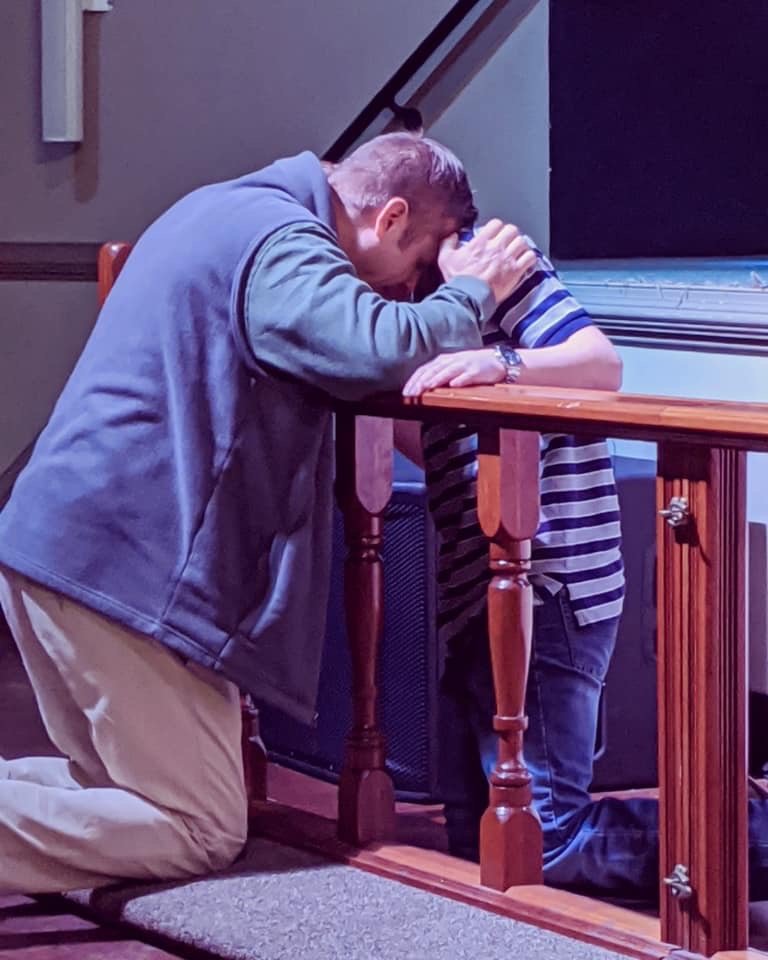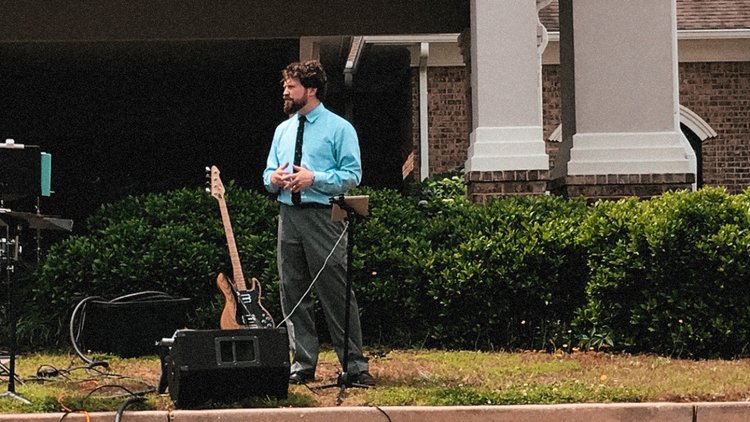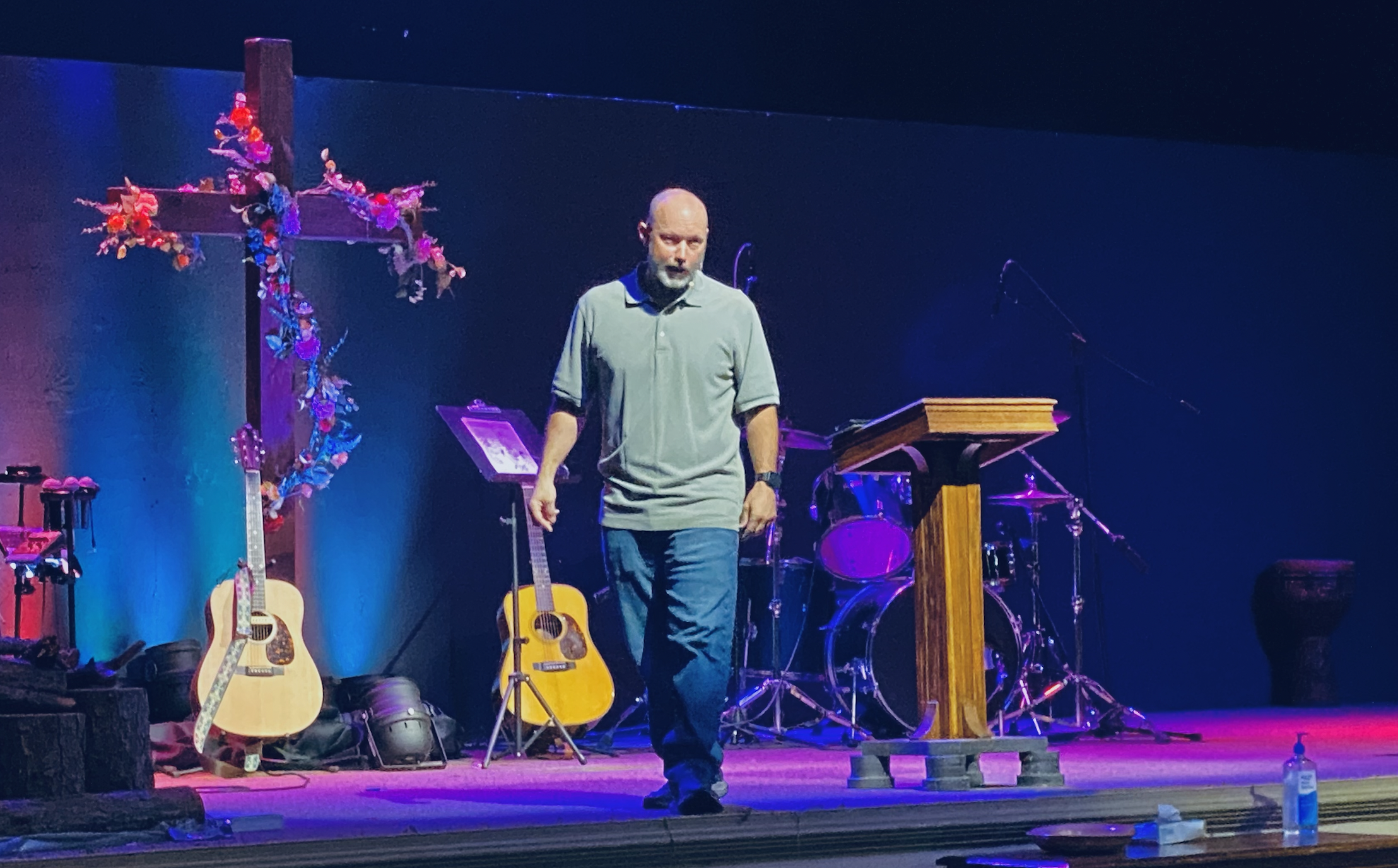Summary:
Fincher Methodist Church was named for Joseph and Mary Horne Fincher, who moved to Meansville, Pike County from South Carolina in 1821. The Finchers donated the land for the church, which was established around the year 1822. The first pastor was Andrew Hamil in 1823. It is thought that the church was first part of the twenty-four point circuit, Monroe Circuit. It later became part of the Zebulon Circuit until 1866 when the circuit was divided. Fincher was part of the Pike Mission which was established around this time and later changed to Milner Circuit. In 1903 Fincher was back on the Zebulon Circuit, and the next year it was on another circuit. Fincher came back to the Zebulon Circuit with Zebulon, Concord, Hollonville, Jolly, and Century Nelson in 1911. By 1918, the only churches remaining were Zebulon, Fincher and Concord and remained that way until 1947. Fincher asked for full-time status in 1961 at the annual conference, and a new parsonage was established the same year. In 1972, due to the small size of Molena Methodist Church it was determined that the Fincher-Molena Charge should be established and Fincher would subsidize Molena. The church closed doors and now Life Springs Church in Zebulon, GA exists in the area.
Life Springs & Fincher Chapel
More About FIncher:
Fincher Methodist Church, believed to be the oldest church in Pike County and located in the Meansville community on Georgia State Road 109, has a long history of witness and service. Fincher's organization date is not certain, but it is believed to have been established in 1822. Among the charter members were Joseph Fincher and his wife Mary Horne Fincher, for whom the church was named. They came to Pike County from South Carolina soon after they were married in 1821 and settled on lands in this community. It was on land given by them that the church had its beginning under a brush arbor. It was on this land that the original church was erected. The records show that Andrew Hamil was the first pastor. He came to Pike County in 1823 and was the first Methodist preacher who came to this part of Georgia. There is no record of who conducted services from the time of the organization until he came. It is thought that the church was originally part of the twenty-four point circuit known as the Monroe Circuit. No records are available to identify the other churches on the Monroe Circuit. Somewhere in the early years the Zebulon Circuit was formed. It is not certain how many churches comprised this circuit but we do know Fincher was part of it eight years and remained so until 1866 when the circuit was divided.
About that time the Pike Mission was organized and later changed to Milner Circuit. It embraced Milner, Ebenezer, Fincher and Century Nelson. Fincher was associated with 8 number of different churches through the years as circuits changed with new churches being added and older ones placed on different circuits. In 1903 Fincher was back on the Zebulon Circuit but the next year Fincher and two other churches were placed elsewhere. In 1911 Fincher came back to the Zebulon Circuit which was then composed of Zebulon, Fincher, Concord, Hollonville, Jolly and Century Nelson. As time progressed the number of churches on the circuit was gradually reduced. In 1912 Molena went to another circuit; Jolly was sold for $100 in 1915; and in 1917, Hollonville was placed elsewhere. Thus by 1918 it was only Zebulon, Fincher and Concord on the Zebulon Circuit. This arrangement remained until 1941 when Concord was placed with the Williamson Charge. Both Fincher and Zebulon paid Concord $75 each for their equity in the Zebulon parsonage and the Zebulon-Fincher Charge was established. For fifty years Zebulon and Fincher were together on a circuit or charge. In 1913 a new parsonage was completed at a cost of $2000 and it served as home for the pastor of Fincher and Zebulon churches for forty eight years.
A campground was established on the Fincher church property at a very early date but for lack of water it was moved to Bluff Springs in 1853. Both Fincher and Zebulon churches utilized the campground for many years. It was known as Bluff Springs Camp Ground and was sold in 1950 for $1989.85. The proceeds were equally divided between the two churches and Fincher's share became the beginnings of a fund later used to build a fellowship hall. A school was also established on the church property in the early history of the church. The school was consolidated with the Meansville School in 1923. Underneath the present church building, four former church buildings have left imprints of their foundations, the first being a one room log building. Each building since that time has been built larger than the last and has covered the foundation marks of the previous ones. The last wooden structure was built in 1905. It had a large auditorium and three Sunday School rooms at the rear which were built in 1924. On the morning of November 2, 1942 this structure burned to the ground. But before the embers had died away, the trustees met and plans were made to rebuild a larger and better church building with ample Sunday School facilities. The present brick building was completed, furnished and paid for by September 1944. All of the sanctuary furniture pews, chancel and pulpit furnuture - were fashioned, finished ~nd installed by Mr. A.C. McGahee. He selected standing timber from the finest trees of original growth Georgia pine, directed the sawing and drying of the lumber and then shaped and fitted each part with care and precision. As a result, Fincher Church has furniture, still in use, that is of such quality, character and stability it can never be duplicated.
In an impressive service on September 24, 1944, the new church building was dedicated by Bishop Arthur J. Moore as a house for the worship and service of God. Recognizing the need for a fellowship hall, the Woman's Society of Christian Service, in April 1948, voted to promote such a building program. By September 1953, the building known as Fincher Annex was completed, furnished, paid for and serving the community. In 1952 a deep well was dug on the church property and a pump house and pump installed. In 1958 the sanctuary was remodelled, redecorated and carpeted. On December 18, 1960 the members of Fincher Church voted by an overwhelming majority to ask for full-time status at the 1961 session of the Annual Conference. This necessitated a settlement of the Zebulon parsonage. It was decided that Zebulon would pay $5,250 to Fincher for their equity in the parsonage and that Zebulon would keep it for their pastor. Subsequently, on April 9, 1961, Fincher broke ground for a new parsonage to be constructed on property across the road from the church. The site of the parsonage was on land which had also been given to the Church by the original Fincher family. Ground breaking for the parsonage holds particular significance in the life and history of Fincher. Ground was broken by Mrs. Effie Slade Reeves, oldest member of the church at that time, and work began immediately.
The first parsonage family, Rev. and Mrs. E. Donald McKinney and sons, moved into the new parsonage on July 13, 1961. In December 1962 the parsonage was dedicated with District Superintendent Clyde Calloway presiding. At that time the mortgage note was burned and the parsonage was free of any indebtedness. Over the years a number of memorial gifts have been presented to the church. Notably: in 1958 a Fischer piano; in 1959 an altar set; in 1965 five offering plates; in 1967 an organ and chimes; and, in 1969 a baptisimal font. In 1963 the Methodist Men's Club erected a brick marker in front of the church which was later improved with an inscribed marble front. In 1972 steps and a handrail were installed from the road in front of the church up the embankment for easier access from the parsonage. New sanctuary lights and public address system were added along with security lights for the outside area.
In September of 1972 Fincher Church joined Pike County in the celebration of the county's Sesquicentennial with a Homecoming and "Faith of Our Fathers' Day at the church. The Sesquicentennial Celebration held a special significance for Fincher since the church and county were both established in the same year. In 1972 Molena Church became associated with Fincher Church. Molena had previously been part of the Woodbury Charge and it was determined that the District line for the Conference should be along County lines. Molena was the only Church in Pike County not associated with the Griffin District. The situation was presented to leaders of Fincher Church indicating that Molena was too small to stand alone. It was then decided that Fincher would subsidize Molena Church and the Fincher Molena Charge was formed. This arrangement remains today with Fincher, the larger of the two churches, meeting the majority of the expenses and responsibilities of the charge. In April 1973 plans were made for creating a non-profit corporation (separate from the Church) for the purpose of owning and managing the cemetery property and establishing a Trust Fund to assure perpetual care. The necessary formalities for transferring titles and creating the corporation were completed in July 1973. Agreement was made and entered into with Commercial Bank and Trust Company, Griffin, Georgia to become the Trustee of Fincher Memorial Cemetery Company, Inc. in August 1973. The affairs of the corporation are managed by a self-perpetuating Board of Directors who are continuously making improvements and providing care and maintenance. In 1974, Fincher Church again held a Homecoming Day of Fellowship with former ministers and members now living elsewhere invited to attend. This is a tradition which the church endeavors to maintain with our next Homecoming scheduled for August 1981.
Fincher Church has a distinctive history of service and support to the youth of the community. The church has for many years had an active MYF group. In 1978 a junior MYF was organized and in 1981 a Children's Choir was formed which regularly performs to the delight of the congregation. The young people conduct morning worship services on Fifth Sundays and the younger children rotate the privilege of serving as acolyte for each Sunday morning service. The Church sponsors annual Vacation Bible School, Mother's Day and Father's Day recognition, and Christmas parties. An Easter Egg Hunt is held each year and the youth serve breakfast in the Fincher Annex following the sunrise service held each Easter morning. The United Methodist Men sponsor a Boy Scout Troop and the United Methodist Women present each graduating high school senior with a gift in recognition of their achievement.
In June 1979 the church undertook one of the biggest projects of its recent history. In November 1979 a central heating and air conditioning system was installed and completely paid for. The project was completed without the need to borrow any money. The total cost of the project was raised through pledges, gifts, savings and grant money combined with income derived from the sale of the old heating equipment. This stands as yet another example of the church's ability to follow through with projects which might not ordinarily be undertaken by a church of its size. Fincher is happy to have had the privilege of witnessing and serving through some of its members in other parts of the world and beyond the community. Miss Leah Hartley joined the church in 1913 and “went out as a missionary” in 1927. She returned to the States in 1929 and soon afterward began teaching a class of mentally retarded children in the Atlanta area. Fincher is the home church of W. E. Cochran, a minister in the South Georgia Conference. He joined Fincher as a young boy in 1932 but later transferred him membership to Hightower Memorial Church in Thomaston and was called to preach while a member there. But Fincher is due the credit for his early Christian training and he refers to Fincher as his home church. Another member of Fincher, Mrs. Ethan L. Taylor, has served as Conference President of the Woman's Society of Christian Service and Wesleyan Service Guild of the North Georgia Conference (1963 - 1967) and as a delegate to four General Conferences and three Jurisdictional Conferences (1964 - 1972).






